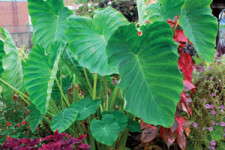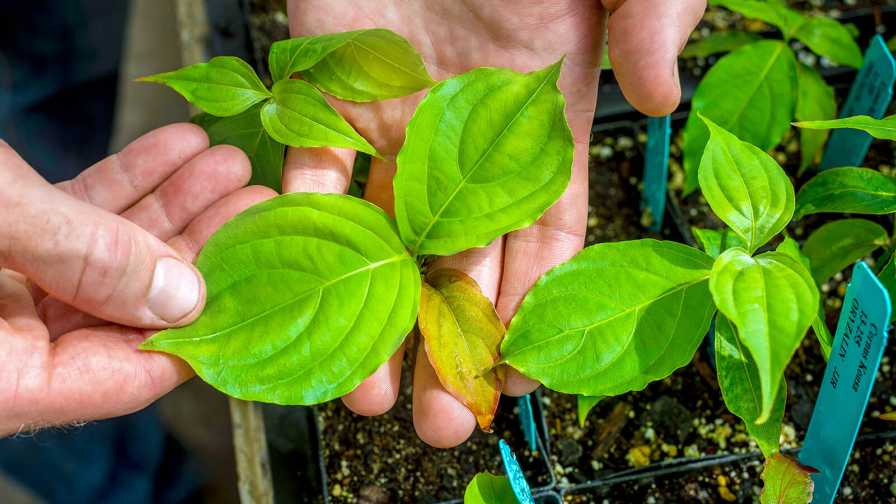5 Potentially Profitable Plants

In the Trial Gardens at UGA, we have petunias–boy, do we have petunias. We also have begonias, geraniums, coleuses and calibrachoas–wow, do we have calibrachoas. We have ageratums, echinaceas, coreopsis and heliotropes.
In fact, I would hazard a guess that we have almost all the groups of plants that breeders are producing and retailers are selling. We trial them all and show off the best in the garden, as well as the not-so-great ones.
I understand these important plant groups are our bread and butter, but it is still hard not to exclaim, “Oh, please, not another red geranium!” Unfortunately, like bread and butter, they quickly attain commodity status and profits can become challenging.
Give These 5 A Chance
So, I thought I could share at least some of the dessert items–the chocolate cheesecakes of the plant world, which taste so good but are not as easily found as glazed donuts. Are these unusual plants profitable? It’s hard to say, but those who grow and offer them seem to do so with confidence. They are, to be sure, specialty items and probably won’t be found at the common outlets. But who wants to be common?
Here are five plants everyone from gardeners to retailers and seasoned greenhouse veterans should take a second look at. As a bonus, go to GreenhouseGrower.com to see my videos of these plants.
1 Colocasia ‘Jack’s Giant.’ It starts off as any other green taro, but get out of the way because this thing is a monster. It is the namesake of Jack DeVroomen at Marlboro Bulb in North Carolina. Like all green foliage plants, it needs some effective POP tactics to attract buyers, but one good photo is all that should be needed. It is perennial in USDA Zone 7b.
I would be remiss not to mention the other great taro, ‘Diamond Head,’ which I featured a couple years ago. It can be seen at AllanArmitage.net.
2 Alternanthera ‘Little Ruby.’ Talk about diversity: from ‘Jack’s Giant’ to this 12-inch groundcover. Both are stunning but for different reasons. Alternantheras have caught on well in some parts of the country. They are tough, heat tolerant and resistant to most diseases and insects, and they provide season-long foliar color.
‘Little Ruby’ from Athena Brazil (GroLink) has been the best little plant we’ve had in the garden for many years. The color is stable. Even in our 40 days over 90°F, the color did not fade. Height was 8 to 12 inches all season.
3 ‘Manihot’ (variegated tapioca). Yes, you have seen this from me before, and the problems of propagation are still far from solved. However, Florida growers seem to have it licked, and we have good success rooting in a pure sand medium. So it can be done.
This is a plant more suited for the southern half of the country because it sucks in heat like a sponge. But if there is one plant people stop and ask about in the garden from July to frost, it is this one. I am tired of talking about it and not giving a source. You are probably tired of hearing me go on and on. But if you are a source, let us all know and let’s get these plants sold.
4 Clerodendrum ‘Starshine.’ We cannot live by foliage alone, and we have many plants with stunning flowers to meet and greet you in the trial gardens. However, the greatest and most pleasant surprise this year was ‘Starshine’ clerodendrum, otherwise known as pagoda flower.
Early in the season, it sported good-looking dark green leaves. They’re handsome but nothing to write home about. We were flabbergasted, however, when this plant started to flower. It was spectacular, and even in late September it was still looking good–even if not at its peak. The coral salmon flowers shine from across the garden.
It was sent to us by Athena Brazil (GroLink) and if I have anything to do about it, ‘Starshine’ should be a lot more common next year.
5 Coral Vine. I am always in a quandary when talking about vines, especially annual vines like this one. On one hand, vines are gaining in popularity among gardeners, but they could no more buy one at most retail outlets–mass market or independent–than they could find an 8-track tape player.
Growers won’t grow them and retailers don’t want to mess with them, so consumers never hear of them. If that is how it is, then I hope the mail-order people make a killing. There are dozens of fabulous non-invasive vines out there, and coral vine happens to be one of my favorites. It flowers in late summer and fall and attracts bees, butterflies, hummingbirds and the occasional house elf.









